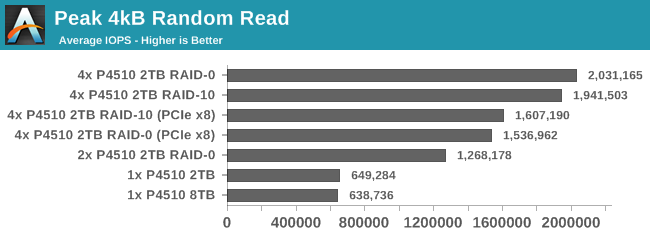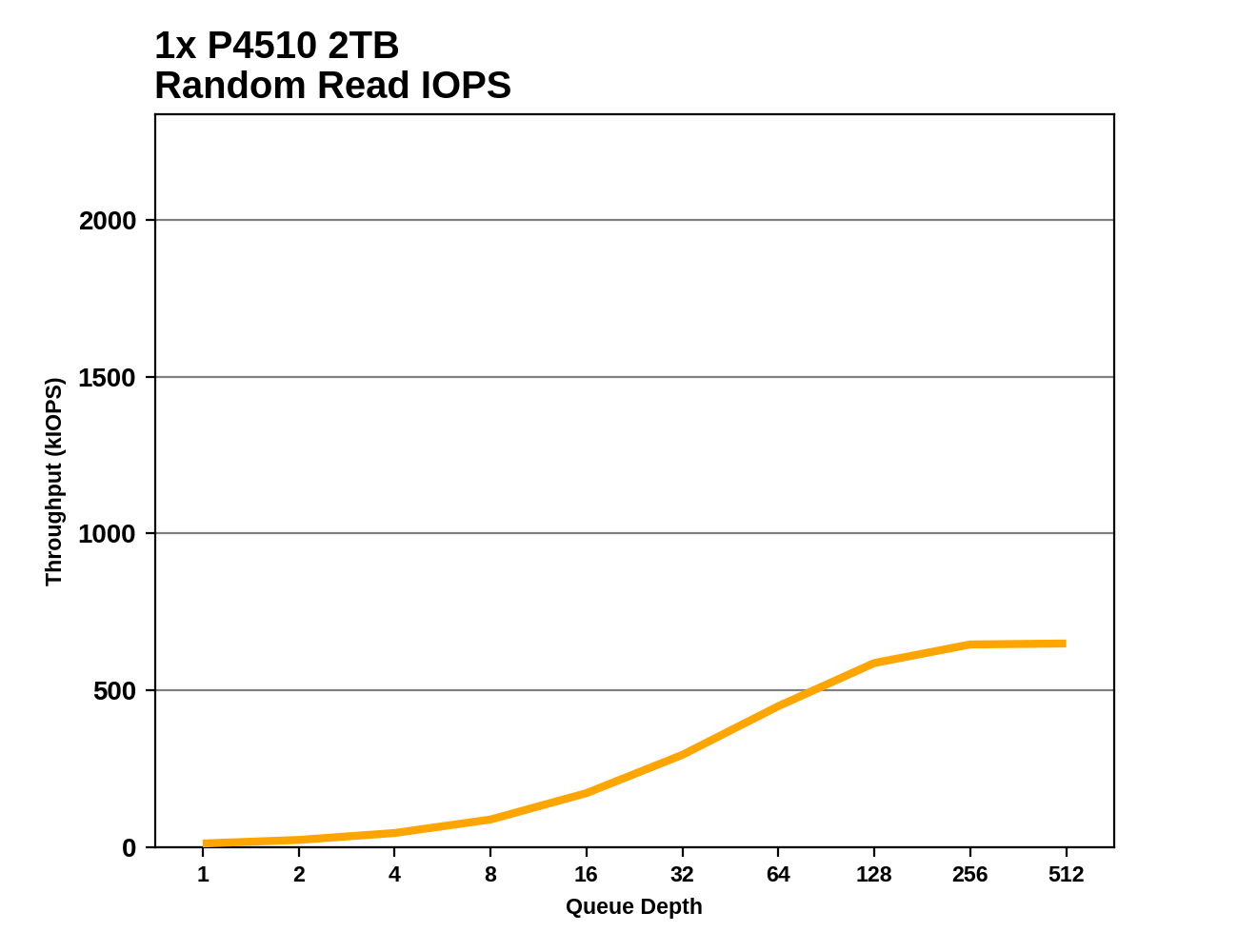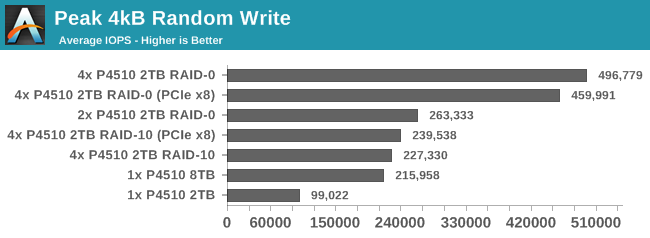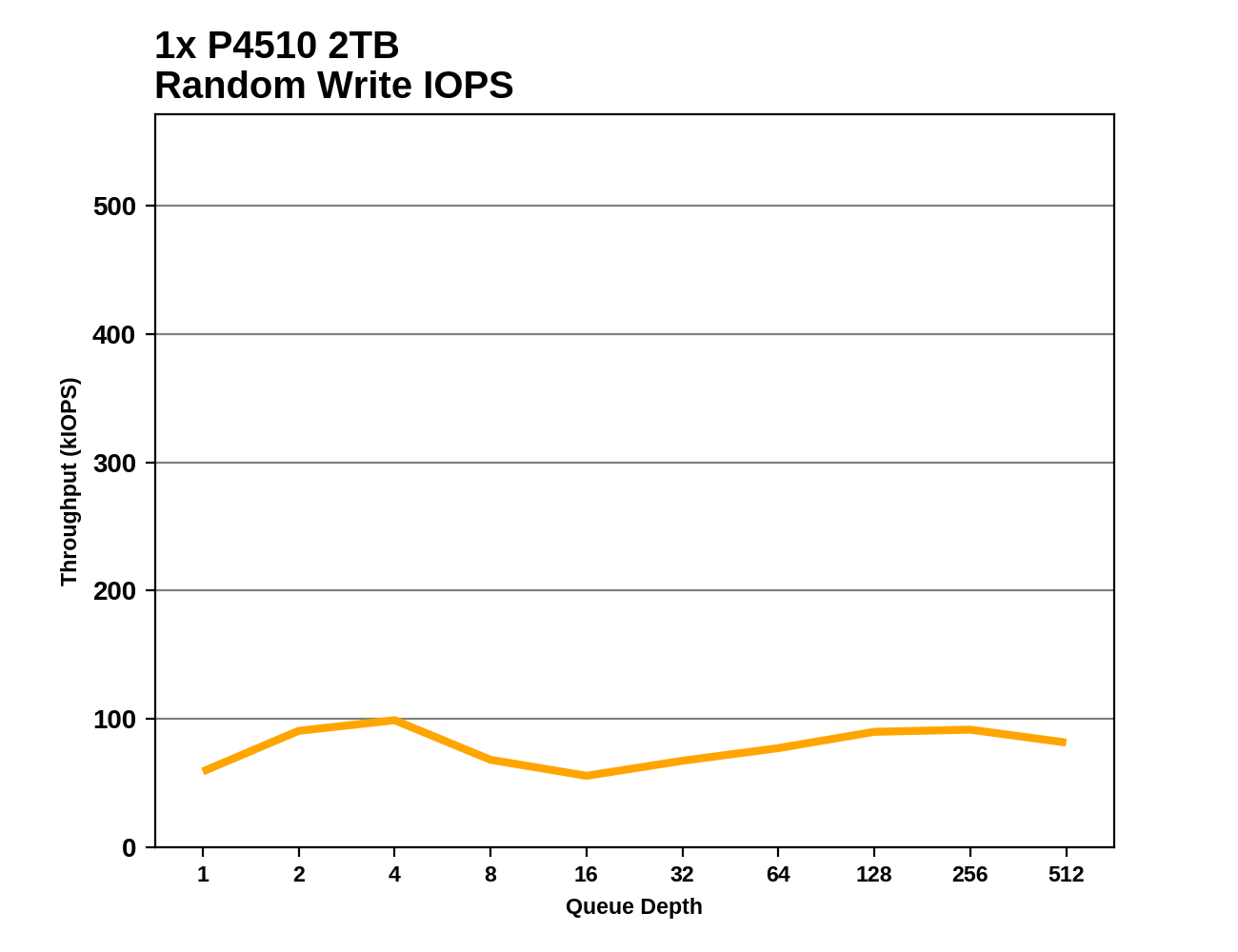The Intel SSD DC P4510 SSD Review Part 1: Virtual RAID On CPU (VROC) Scalability
by Billy Tallis on February 15, 2018 3:00 PM EST- Posted in
- SSDs
- Storage
- Intel
- RAID
- Enterprise SSDs
- NVMe
- U.2
- Purley
- Skylake-SP
- VROC
Random Read Performance
In order to properly stress a four-drive NVMe RAID array, this test covers queue depths much higher than our client SSD tests: from 1 to 512, using from one to eight worker threads each with queue depths up to 64. Each queue depth is tested for four minutes, and the performance average excludes the first minute. The queue depths are tested back to back with no idle time. The individual read operations are 4kB, and cover the span of the drive or array. Prior to running this test, the drives were preconditioned by writing to the entire drive with random writes, twice over.

The 2TB and 8TB P4510s have the same peak random read performance. The RAID-0 and RAID-10 configurations both provide about three times the performance of a single drive, and the two-drive RAID-0 provides just under twice the performance of a single drive.
 |
|||||||||
The individual P4510 drives don't saturate until at least QD128. The RAID configurations with a bottleneck from the PCIe x8 switch uplink have hit that limit by the end of the test, but the four-drive configurations without that bottleneck could clearly deliver even higher throughput with more worker threads.
Random Write Performance
As with the random read test, this test covers queue depths from 1 to 512, using from one to eight worker threads each with queue depths up to 64. Each queue depth is tested for four minutes, and the performance average excludes the first minute. The queue depths are tested back to back with no idle time. The individual write operations are 4kB, and cover the span of the drive or array. This test was run immediately after the random read test, so the drives had been preconditioned with two full drive writes of random writes.

The four-drive RAID-0 configuration manages to provide five times the random write throughput of a single 2TB drive, and even the configuration with a PCIe x8 bottleneck is over four times faster than a single drive. The RAID-10 configurations and the two-drive RAID-0 are only slightly faster than the single 8TB drive, which has more than twice the random write throughput of the 2TB model.
 |
|||||||||
Several of the test runs show performance drops in the second half that we did not have time to debug, but the general pattern seems to be that random write performance saturates at relatively low queue depths, around QD16 or QD32.










21 Comments
View All Comments
ckrt - Tuesday, February 20, 2018 - link
that and the other way around... virtualization for aggregation... with those 32 rulers adding up to a PETABYTE of storage and some neat high performance computing nodes using submerged liquid cooling, you can have the equivalent of a full small or medium business datacenter in just one 42u rack... man!... the posibilities!